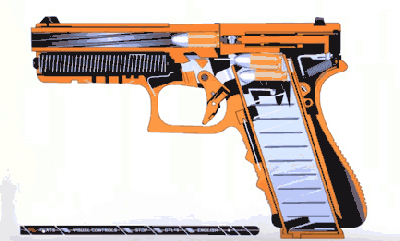|
|
以下有关65JAP的绍介转自Wiki,很有意思的综述。我头次知道大正11年歪把子,96式轻机和97式狙击用的是Genso减装弹药,看来,日本人对自己本来很科学很实用主义的东西逐渐西学东渐失去信心,而同样选择了神奇口径65的大洋彼岸的瑞典人则信心满满的自负认为自己的65是最优的中间选择,虽然没有经过战争考验,但是百年后swede的65传奇至今仍在北美和欧洲不断传颂!
Early 6.5×50mm cartridges had a cupronickel, round-nosed bullet weighing 10.4 grams (160 gr) fired with approximately 2.0 grams (31 gr) of smokeless powder. This was later changed with the adoption of the Type 38 when Japan, in line with the other great powers around the same time, changed to the pointed, or spitzer, bullet in the first decade of the twentieth century. The Type 38 spitzer round fired a 9.0-gram (139 gr) bullet with a powder charge of 33 grains (2.1 g) for a muzzle velocity of around 770 metres per second (2,500 ft/s).[1]
The Type 38 spitzer version of the 6.5×50mm cartridge remained unchanged until after the adoption of the Type 11 light machine gun in 1922. The relatively short barrel (17.5 inches) produced excessive flash with standard ammunition (initially intended for Type 38 rifles with barrel more than a foot longer). A new loading was introduced for this reason, which had a slightly lower muzzle velocity (under 100fps), but burned much more completely in the Type 11 short barrel and produced much less flash as a result. This new round was called the 6.5×50mm Arisaka genso round, the cartons identified by a circled "G".
Japanese military surplus 6.5x50mmSR Arisaka round
This special ammunition was also issued to soldiers carrying the Type 96 light machine gun introduced in 1936, and to snipers issued the Type 97 sniper rifle, introduced in 1937. The advantage of the reduced charge ammunition to the sniper was that it aided in his concealment as the reduced charge rounds produced less muzzle flash than standard rounds and thus did not give away the sniper's position.
Also produced was 6.5 mm gallery ammunition, incorporating a paper or wood bullet; and dummy rounds, which were issued to Japanese forces. These were either all brass rounds or, more commonly, red varnished wood with a metal base and rim. Ammunition used in the spigot-type Japanese grenade launchers often has paper bullets and can be identified by the staked primers.
The 6.5 mm Japanese round was criticized as being under-powered in comparison to American and European military cartridges such as the .30-06, .303 British, 7.92×57mm Mauser, and 7.62×54mmR. For this reason it was later replaced by the more powerful 7.7×58mm cartridge. Modern militaries have since abandoned such cartridges for infantry rifle use, as they are unnecessary in typical engagements taking place at less than 300 meters. As it was, the 6.5 mm round with the Type 38 spitzer bullet had a desirable flat trajectory, and effective terminal ballistics with rapid yaw on impact causing severe wounds. Larger caliber military cartridges are also optimal for machine guns to use for long-range firing, and rifles were often only made to chamber them in the interest of logistics. Japan had the 7.7 mm cartridge in use only by machine guns for years before developing a rifle for the round.[2] |
|







